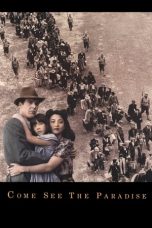- Source: Forb
A forb or phorb is a herbaceous flowering plant that is not a graminoid (grass, sedge, or rush). The term is used in botany and in vegetation ecology especially in relation to grasslands and understory. Typically, these are eudicots without woody stems.
Etymology
The word "forb" is derived from Greek phorbḗ (φορβή), meaning "pasture" or "fodder". The Hellenic spelling "phorb" is sometimes used, and in older usage this sometimes includes graminids and other plants currently not regarded as forbs.
Guilds
Forbs are members of a guild—a group of plant species with broadly similar growth forms. In certain contexts in ecology, guild membership may often be more important than the taxonomic relationships between organisms.
In informal classification
In addition to its use in ecology, the term "forb" may be used for subdividing popular guides to wildflowers, distinguishing them from other categories such as grasses, sedges, shrubs, and trees. Some examples of forbs are clovers, sunflowers, daylilies, and milkweed.
Forb Adaptation Zones:
Kale and turnip are examples of forb adaptations distributed over much of Europe, southern Oceania, northern Asia, and northern North America. In cooler climates, these crops are grown year-round, while in warmer climates, they are used as winter forage.
Examples
Linnaean taxonomy family names are given.
Acanthaceae,
Aizoaceae,
Amaranthaceae,
Apiaceae,
Apocynaceae,
Asclepiadaceae,
Asteraceae,
Balsaminaceae,
Begoniaceae,
Boraginaceae,
Brassicaceae,
Buxaceae,
Campanulaceae,
Cannabaceae,
Caryophyllaceae,
Chenopodiaceae,
Clusiaceae,
Convolvulaceae,
Crassulaceae,
Cucurbitaceae,
Cuscutaceae,
Dipsacaceae,
Ericaceae,
Euphorbiaceae,
Fabaceae,
Gentianaceae,
Geraniaceae,
Gunneraceae,
Haloragaceae,
Hydrophyllaceae,
Lamiaceae,
Lentibulariaceae,
Limnanthaceae,
Linaceae,
Lythraceae,
Malvaceae,
Moraceae,
Nyctaginaceae,
Onagraceae,
Orobanchaceae,
Oxalidaceae,
Papaveraceae,
Phytolaccaceae,
Plantaginaceae,
Plumbaginaceae,
Polemoniaceae,
Polygonaceae,
Portulacaceae,
Primulaceae,
Ranunculaceae,
Resedaceae,
Rosaceae,
Rubiaceae,
Scrophulariaceae,
Solanaceae,
Thymelaeaceae,
Urticaceae,
Valerianaceae,
Verbenaceae,
Violaceae,
Zygophyllaceae
See also
Dicotyledon – Historical grouping of flowering plants
Herbaceous plant – Plant that has no persistent woody stem above ground
Overgrazing – When plants are grazed for extended periods without sufficient recovery time
Tapestry lawn
References
External links
United States Department of Agriculture Natural Resources Conservation Service link to Growth habits Codes and Definitions.
Kata Kunci Pencarian:
- Charles de Montalembert
- Vernonia
- Arktik
- Merumput
- Ayam-kipas besar
- Forb
- Carlos Forbs
- José Forbs
- Vladimir Forbs
- Fraternal Order of Real Bearded Santas
- Common sunflower
- Flowering plant
- Barmah National Park
- Black-tailed jackrabbit
- Mule deer
Smurfs: The Lost Village (2017)
The Last Rifleman (2023)
No More Posts Available.
No more pages to load.












